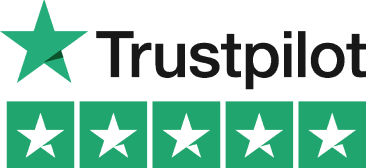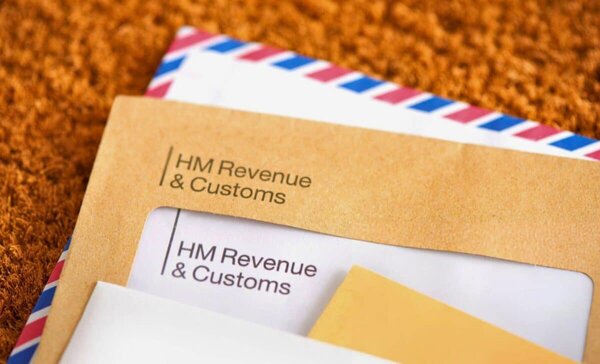Let’s Break This Down Together...
Not sure if you need to pay tax on your side hustle? You’re not alone; the rules can feel confusing at first. This article explains the £1,000 trading allowance in simple terms. We’ll cover who it applies to, how it works, and what to do if you go over the limit. By the end, you’ll know exactly where you stand and what action to take. Let’s dive in.
What Is the Trading Allowance for Side Hustles UK?
Side hustles have become increasingly popular across the UK, from selling handmade crafts online to weekend dog walking. But when it comes to paying tax on this extra income, many people aren’t sure where they stand.
This rise in side hustles reflects the UK's growing entrepreneurial spirit and highlights the government's commitment to supporting small businesses. Fortunately, HMRC offers a trading allowance that can make your tax situation much simpler if you’re earning a modest amount from your side gig.
Policies like the trading allowance are designed to encourage economic growth and entrepreneurship. The trading allowance was introduced by HMRC as part of a wider initiative, with the exchequer secretary emphasizing the importance of supporting entrepreneurs and simplifying tax for small businesses.
Pie, the UK’s first personal tax app, helps you track your side hustle income and shows when you hit tax threshold. Or if you’re just here to get to grips with it all, let’s break it down!
What Is the £1,000 Trading Allowance?
The trading allowance (also known as the trading income allowance) is a tax-free threshold of £1,000 for anyone with trading or miscellaneous income from side hustles or casual work. HMRC introduced this allowance in 2017 to make life easier for people earning small amounts.
It means you can earn up to £1,000 as a tax free allowance from your side hustles in a tax year without paying a penny in tax. You don’t even need to tell HMRC about it. This allowance is separate from your Personal Allowance (currently £12,570), which applies to your main job or other income sources.
The £1,000 amount also serves as a reporting threshold for HMRC, meaning you only need to submit a tax return if your side hustle income exceeds this limit.
Who Can Use the Trading Allowance?
The trading allowance is available to individuals with small trading income or miscellaneous income from side hustles. This covers activities like online selling, freelance writing, and social media content creation. The allowance is particularly useful for a sole trader or anyone starting a new business, as it helps reduce the administrative burden in the early stages.
It also applies to service-based work such as tutoring, dog walking or delivery driving. A self employed person working in the gig economy can also benefit from the trading allowance. The allowance gives you breathing room to test your business idea. The allowance isn’t available to partnerships or limited companies, it’s strictly for individuals. Also, it doesn’t apply to property rental income, which has its own £1,000 allowance.

How Does the Trading Allowance Work?
If your total side hustle income is £1,000 or less in a tax year, you don’t need to report it to HMRC. You won’t pay any tax on this income either. Once your income exceeds £1,000, you’ll need to register for Self Assessment and submit a tax return. This is where you’ll declare your earnings.
When completing your tax return, you have two options. You can either deduct the £1,000 allowance from your income or claim your actual business expenses. Allowable expenses can be deducted from your income to reduce your taxable trading income, which may result in a lower tax bill.
Claiming allowable expenses provides tax relief by reducing the amount of income you pay tax on. However, if you claim the trading allowance, you cannot claim tax relief on allowable expenses, you must choose one or the other.
You must choose whichever gives you the better result, but you can’t do both. It’s one or the other, so calculate carefully. Some self-employed individuals may use the cash basis accounting method, which affects how income and expenses are reported on your tax return.
Partial Relief and the Trading Allowance
Partial relief comes into play when your gross trading income from all your side hustles goes over the £1,000 trading allowance in a tax year. In this situation, you can choose to deduct the £1,000 trading allowance from your gross trading income instead of claiming your actual business expenses. This is known as claiming partial relief, and it means your taxable profit is calculated as your total income minus the trading allowance.
To claim partial relief, you’ll need to complete a Self Assessment tax return and clearly indicate whether you’re using the trading allowance or your actual expenses to reduce your taxable profit. Remember, you can’t claim both in the same tax year for the same income.
The choice you make will affect your income tax, national insurance contributions, and the amount of taxable income you report to HMRC. Always review your business expenses and total income to decide which option gives you the best tax outcome.
Gross Trading Income and the Trading Allowance
Gross trading income is the total amount you earn from your business activities before taking off any expenses. This includes all trading income, casual work, and miscellaneous earnings you receive in a tax year. Your gross trading income is important because it determines whether you qualify for the trading allowance and how much tax you might need to pay.
If your gross trading income is £1,000 or less, you can claim the full trading allowance, meaning you won’t need to pay tax or file a tax return for that income. However, if your gross trading income is more than £1,000, you can claim partial relief by deducting the £1,000 trading allowance from your gross income.
In this case, you’ll need to complete a Self Assessment tax return and pay tax on the remaining amount. Keeping accurate records of your gross income is essential to ensure you pay the right amount of tax and claim the correct relief.

What If I Have Multiple Side Hustles?
The £1,000 trading allowance applies to your combined income from all trading and miscellaneous sources. It’s not a separate allowance for each activity. For example, if you earn £600 from selling crafts and £500 from weekend tutoring, your total income of £1,100 exceeds the allowance. You’ll need to register for Self Assessment.
Last year, I started both a weekend gardening service and online craft sales. Tracking both income streams together was crucial to know when I crossed the threshold. All additional income from side hustles, freelance work, or gig economy activities must be included in your tax records to ensure accurate reporting to HMRC.
You need to keep track of all your different income sources throughout the tax year. If you are paid directly for your services, make sure to record these payments accurately for tax purposes. A simple spreadsheet or dedicated app can help with this.
When Do I Need to Register for Self Assessment?
If your side hustle income stays below £1,000 for the tax year, you don’t need to register for Self Assessment. You can simply enjoy your tax-free earnings.
However, if you exceed the £1,000 threshold, you must register by 5th October following the end of the tax year in which you exceeded it. If your side hustle income goes over this threshold, you may need to complete an income tax self assessment to report your earnings and claim any allowable expenses. Missing this deadline could result in penalties.
For example, if you earn £1,200 from your side hustle in the 2023/24 tax year (ending 5th April 2024), you need to register by 5th October 2024. You’ll then need to file a self assessment return with the tax authority (HMRC) and submit your tax return by 31st January 2025, paying any tax due. Setting calendar reminders for these dates is always a good idea. Filing returns on time is important to avoid penalties.
The Trading Allowance and National Insurance
The trading allowance doesn’t just affect your income tax, it also impacts your national insurance contributions. If you’re self employed and your gross trading income is £1,000 or less in a tax year, you won’t need to pay Class 2 or Class 4 national insurance contributions. This means your side hustle income is completely tax-free up to the allowance.
However, if your gross trading income goes over £1,000, you’ll need to pay national insurance contributions on your taxable profit, whether you claim the trading allowance or your actual expenses.
The choice you make can affect your entitlement to certain benefits, such as maternity allowance or tax-free childcare, so it’s important to consider your personal circumstances. If you’re unsure about how the trading allowance affects your national insurance or benefits, it’s a good idea to seek professional advice.
Universal Credit and the Trading Allowance
If you’re self employed and claiming Universal Credit, it’s important to know that the trading allowance is not taken into account when working out your Universal Credit payments. Instead, you’ll need to report your actual business income and expenses to the Department for Work and Pensions (DWP) each month.
This means the income used for Universal Credit calculations may be higher than the income used for income tax purposes, as you can’t deduct the trading allowance. Because of this, your Universal Credit entitlement could be lower than you expect if you rely on the trading allowance for tax purposes. To avoid any issues, make sure you keep detailed records of your self employment income and expenses, and report them accurately to the DWP.
Student Loan Repayments and the Trading Allowance
If you’re self employed and have a student loan, the trading allowance can affect how your repayments are calculated. When you claim the trading allowance, your student loan repayments are based on your income after the allowance has been deducted.
For example, if you have a Plan 2 student loan and earn £29,000 from employment, plus £750 from a side hustle that’s fully covered by the trading allowance, only your employment income will count towards your student loan repayments. It’s important to understand how the trading allowance interacts with your self employment income and student loan obligations.
You can find more guidance in the self-employment resources provided by HMRC and the Student Loans Company. Keeping on top of your tax and income records will help ensure you make the correct student loan repayments and avoid any surprises.

Common Side Hustles and the Trading Allowance
Online selling through platforms like eBay, Etsy, or Depop qualifies for the trading allowance. You can earn money from a variety of side hustles, as long as the activity is for business purposes. This applies if you’re buying items to resell or making things to sell.
Selling personal possessions occasionally doesn’t count as trading. HMRC considers this disposing of unwanted items rather than a business activity. Freelance work such as writing, design, or consulting is covered by the allowance when you are paid for your services.
The same applies to social media influencing, including sponsored posts. Service-based side hustles like dog walking, delivery driving, or tutoring are all eligible for the allowance too. Most casual work qualifies.
Using the Allowance vs Claiming Expenses
When your income exceeds £1,000, you need to decide whether to use the trading allowance or claim actual expenses. Any income above the allowance will be taxed, so it's important to consider your total earnings.
If your expenses are less than £1,000, it’s usually better to claim the trading allowance. This gives you a flat £1,000 deduction without needing receipts. If your expenses exceed £1,000, claiming actual expenses will likely save you more tax. But you’ll need evidence of all business costs. It's worth noting that you can only choose one option per tax year, so compare which method gives you the best result.
Keep in mind that if you claim actual expenses, you must have proper records. This includes receipts, invoices and bank statements. If you do not keep proper records, you may end up paying extra tax.
Final Thoughts
The £1,000 trading allowance is a helpful tax break if you’re running a small side hustle in the UK. It removes the administrative burden for casual earners. Recent changes, sometimes referred to as the 'hustle tax', have introduced new reporting requirements for side hustlers, making it important to stay updated on the latest rules.
Even if your income is below the threshold, it’s still good practice to keep basic records. HMRC may ask for evidence of your earnings at some point. HMRC now offers a simple online service for reporting side hustle income, making compliance easier for many individuals. Remember that exceeding the threshold doesn’t mean paying tax on your entire income. You’ll only pay tax on the portion above £1,000 if you use the allowance.
As your side hustle grows, regularly review whether the allowance or claiming expenses works better for you. Your tax position may change as your business develops. For those earning between £1,000 and £3,000 from side hustles, HMRC has introduced a new simple online service to streamline the tax process and reduce the need for a full Self Assessment.

Pie: Simplifying Trading Allowance for Side Hustles UK Tax
Starting a side hustle should be exciting, not a tax headache! Pie, the UK's first personal tax app, makes it easy to track all your income streams in one place.
Our app shows you in real-time how much tax you might owe. Pie makes record-keeping simple and stress-free. We can help you decide whether to use the trading allowance or claim expenses based on your specific situation. Our tax experts are always on hand to answer questions. Why not take a look at how Pie works if you want to take the worry out of your side hustle taxes?

Quick and Easy Guide to File a Tax Return For Side Hustle Income
Follow these steps to file a tax return through Pie app
First create an income source and add your income in the bookkeeping section by swiping right on any taxable income you want to declare on your tax return. This will move the transaction into the ‘income tab’.Step 1

In the ‘Tax Overview’ section, each of the series of progress indicators must be checked and completed. Once you’ve confirmed that all progress pills are completed, tap on the ‘Submit to HMRC’ button. Step 2












